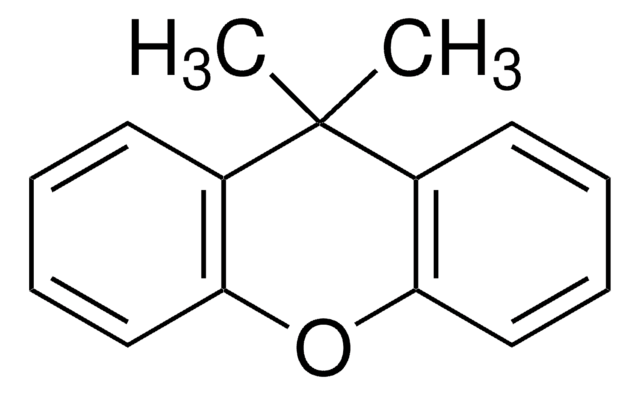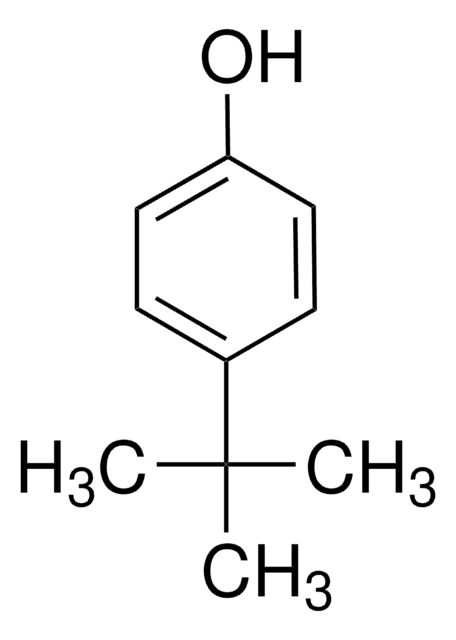All Photos(2)
About This Item
Empirical Formula (Hill Notation):
C23H30O
CAS Number:
Molecular Weight:
322.48
MDL number:
UNSPSC Code:
12352100
PubChem Substance ID:
NACRES:
NA.22
Recommended Products
Assay
97%
mp
188-192 °C (lit.)
SMILES string
CC(C)(C)c1ccc2Oc3ccc(cc3C(C)(C)c2c1)C(C)(C)C
InChI
1S/C23H30O/c1-21(2,3)15-9-11-19-17(13-15)23(7,8)18-14-16(22(4,5)6)10-12-20(18)24-19/h9-14H,1-8H3
InChI key
COCYABCDIOEUAC-UHFFFAOYSA-N
General description
Synthesis of a new series of diphosphine ligands based on 2,7-di-tert-butyl-9,9-dimethylxanthene has been reported.
Application
2,7-Di-tert-butyl-9,9-dimethylxanthene may be used in the preparation of 4,5-diamino-9,9′-dimethylxanthene.
Storage Class Code
11 - Combustible Solids
WGK
WGK 3
Flash Point(F)
Not applicable
Flash Point(C)
Not applicable
Personal Protective Equipment
dust mask type N95 (US), Eyeshields, Gloves
Choose from one of the most recent versions:
Already Own This Product?
Find documentation for the products that you have recently purchased in the Document Library.
Phenoxaphosphine-Based diphosphine ligands. synthesis and application in the hydroformylation reaction.
Zuidema E, et al.
Organometallics, 29(5), 1210-1221 (2010)
Selective acylation of 4, 5-diamino-9, 9'-dimethylxanthene through an aggregation effect.
Mu?iz FM, et al.
Tetrahedron Letters, 49(5), 790-793 (2008)
Antra Ganguly et al.
SLAS technology, 25(1), 25-32 (2019-10-17)
Misclassification of an acute disease condition as chronic and vice versa by electrochemical sweat biomarker sensors can cause significant psychological, emotional, and financial stress among patients. To achieve higher accuracy in distinguishing between a chronic condition and an acute condition
Our team of scientists has experience in all areas of research including Life Science, Material Science, Chemical Synthesis, Chromatography, Analytical and many others.
Contact Technical Service








